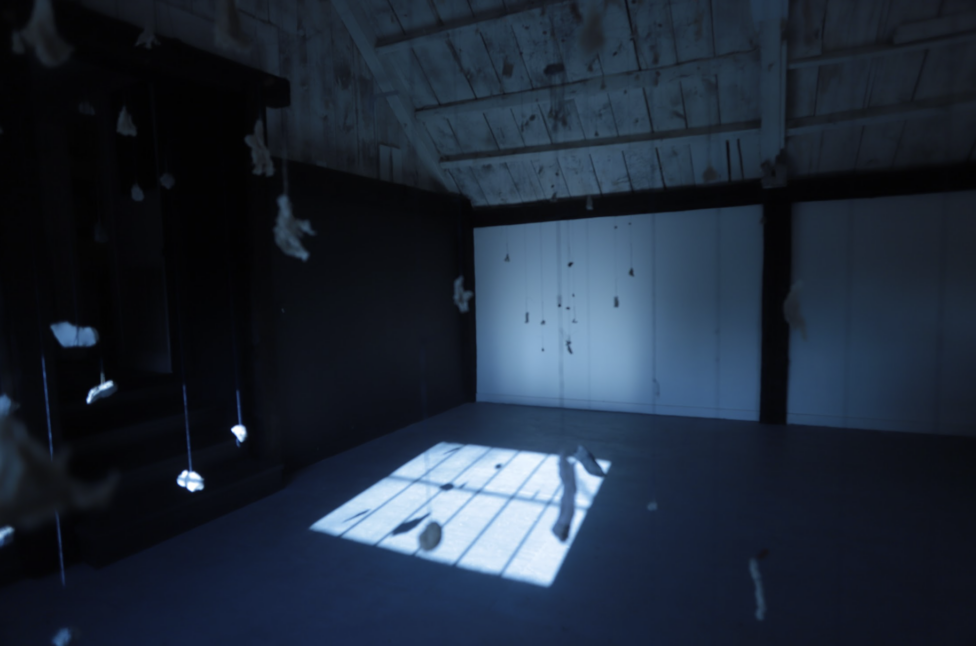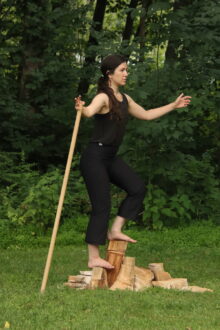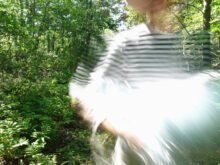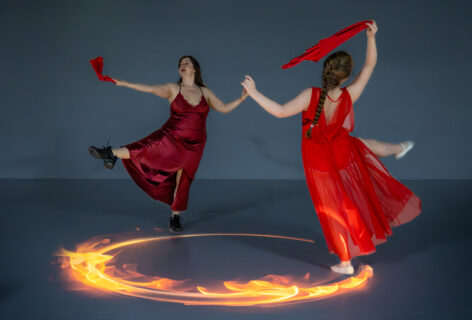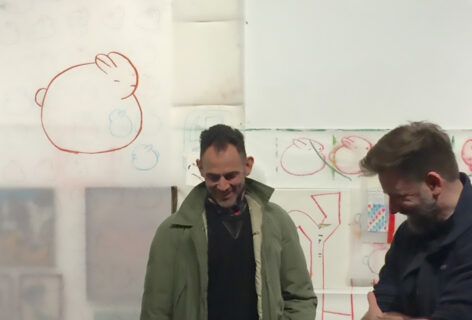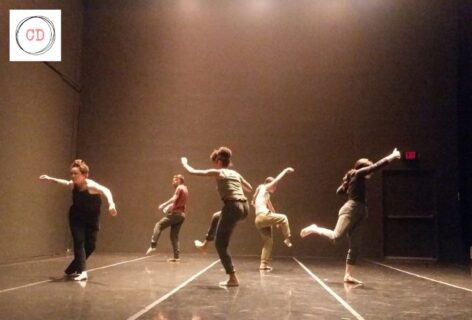Rori Smith and Augusta Sparks Farnum are collaborators and peers in the Intermedia Graduate Program at the University of Maine. Their collective work draws upon each other’s medium (sculpture and performance) and their working methods require thinking often assigned to the other’s primary form. I’m struck by the ways that Rori thinks as a sculptor and Augusta thinks as a dancer. This is the required magic of collaboration—to go to the edge of your knowledge with curiosity and to humble yourself before forms that are new and, at first, strange. Augusta and Rori remind each other to stay nimble when encountering newness, to keep showing up for ideas, and to start by presuming you’re not the only thing alive in a space.
—Londs Reuter, CC Co-editor
This conversation has been edited for the purpose of publication.
Augusta Sparks Farnum
I work a lot at the edge of things. I consider when two different worlds come together. Because together, they create a far more dynamic world. Much of my work is this coming together. The realism and the magic or the magic and the realism… whether I’m seeking that with the landscape and photography or creating installations.
And this combination with you is in line with that. …And it doesn’t negate it in any way to bring magic into the situation.
Rori Smith
Magic! Okay, great. I was gonna ask you, what does magic mean to you? What is magic in your practice or in the world for you?
ASF
I use the word magic in a way that is very ambiguous, right? It is ambiguous and changing, because life is more than we could possibly imagine. And far more interesting than we can even describe.
In this conversation that I’m having with you, I am holding this idea that things exist without us designing them.
What does that mean as an artist when you are constantly making, and how do you move forward as a maker, when you are not in charge of things? I think that holds possibility. The decay, the contamination.
Historian of Science, Jimena Canales shared with me several years ago that when things could not be explained, scientists had a habit of labeling the phenomenon a “demon.” I’m not labeling anything as magic or not, but I’m holding space for things that are outside of what is expected or designed for.
RS
What you said—the idea of the edges and how the edges inform one another.
I’m curious about how we experience the world through surfaces and about the physics of surface tension. So there’s not a homogeny there, there’s a complexity and there’s constant movement and shifting and permeability. I think of the cells of my body forming a deep, dynamic surface, recognizing that my edges are constantly responding.
ASF
There are both sides to that surface.
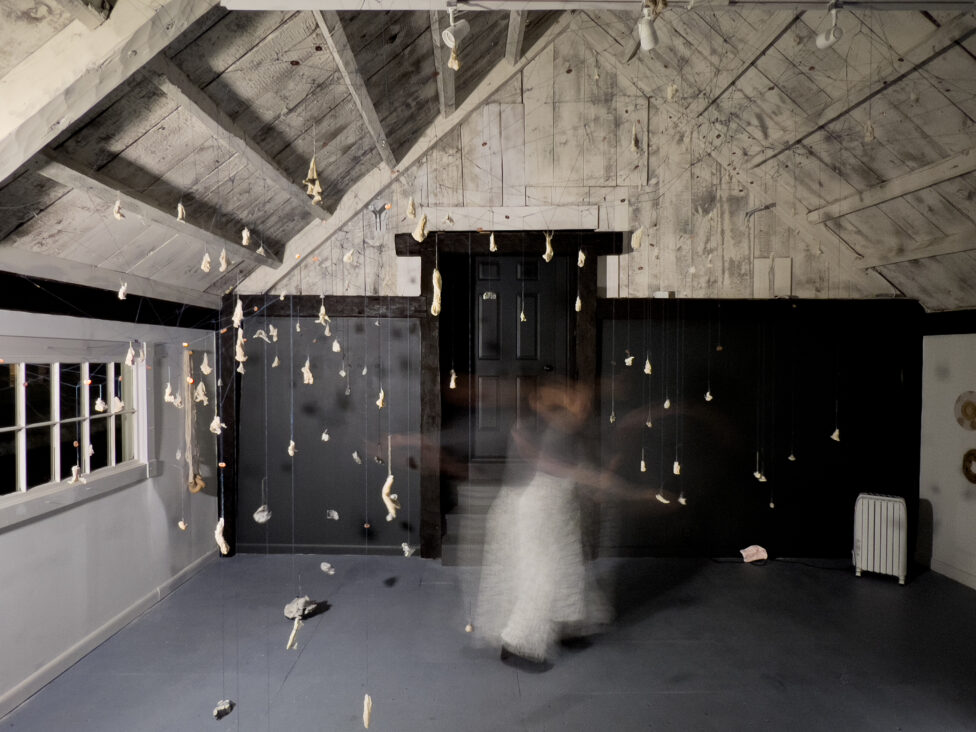
Photo by Augusta Sparks.
RS
You were speaking before about the activity of making. I was writing just a few days ago about how, in my dance practice, my creativity opened up when I stopped thinking of movement as something that I had to generate. I stopped relating to movement as if it was waiting for me to form it. I recognized movement is what gives me form in the world. Movement generates me.
All I have to do is be open to what’s already happening all the time and investigate that. Be curious, be available.
ASF
There are times where I will make a mark, or I’ll make a thing and I’m not present. I’m pushing through something, and it is not connected to self. I am so dysregulated.
When I am most grounded and have clarity within myself, holding everything I have ever been: I am ready. There is a re-beginning. I can walk with ambiguous ideas into my art practice and sense make. Meaning, I am ruminating as making, a modality of enacted thinking.
RS
I’m working on this idea that movement is prior to form. There must be activity, right? Activity brings form and that activity is movement. When I go into the world and think about my relationship with places, my relationship with nature, with other people, I remember: we’ve been doing this. There have always been collaborations between performance and sculpture.
When I’m interacting deliberately with material environments, there are imperceptible exchanges on an energetic level and an atomic level. There’s an exchange between the cells of my body and the cells of that thing. Information is passing, even if it is invisible information, even if it’s unintelligible or unnameable.
I’m learning something about how I move. How I’m situated. Because, really, that’s what being a human being is, right? We are always, always situated. We’re always in relationship with the sphere around us and everything that that contains. I’m just trying to practice and study that by working with sculpted environments because they already are explorations of situatedness.
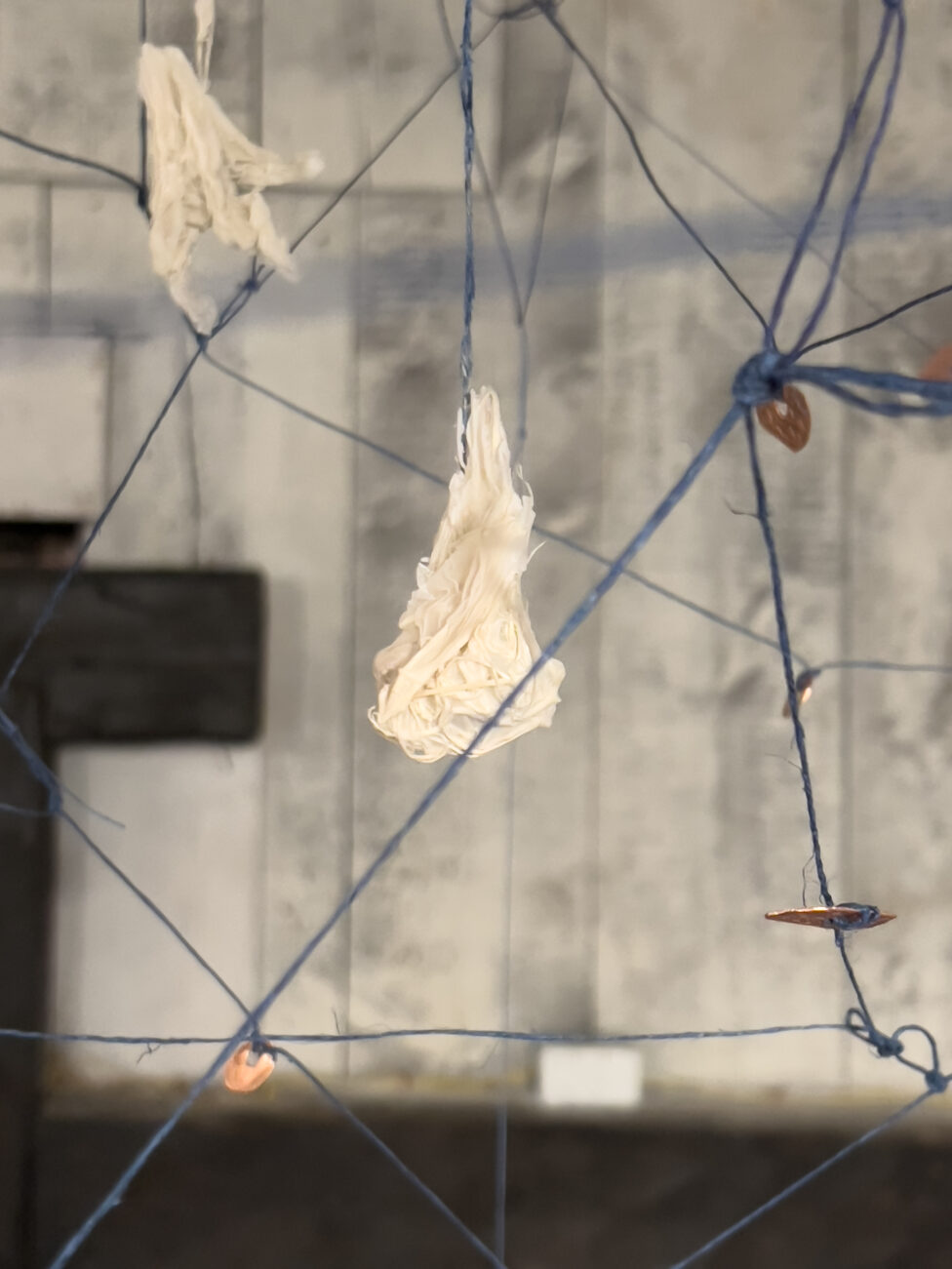
Photo by Augusta Sparks.
ASF
When you work with my sculptures, those objects are each their own thing. Prior to exhibiting, I spend months working with the material, responding back and forth. As the material forms, it becomes what it wants to be… within the confines of my art practice. Although, it really always has the last say. I then present the objects in this inverted pedestal of sorts, as a cosmos. Many of my installations are lifeworlds within lifeworlds.
By inviting you in, you add another layer to the life cycle. You’re dancing with… and the object has another way of being
Also important to note, those objects still exist after you walk away. They continue in their lifecycle, the impermanence of being is valued. And, as you have noted, that moment of engagement has occurred – the transferring of “invisible information,” or “the unnameable.”
RS
When I first came into the installation, I hadn’t yet figured out what my role was. In the first iterations, my attention and orientation was to the installation itself, to notice and move with what existed.
Then I started to think about what you had told me about your physical experience. About how you were walking. And it was dusk. And as the light diminished and your vision changed, you felt your body become suspended? And you also became aware of the stars, and there was this disappearance of the trees—
ASF
—or that I can see the stars through the trees, that I could have both. I think more importantly, that yes, you can have both.
RS
I started thinking about that both-ness in the moment you felt yourself suspended, but you’re walking. You’re not suspended from above, you’re suspended from below. You’re grounded. And I started thinking about how as I come into the installation. How I am what is absent.
What we see as this constellation of luminous bodies is made from trees and it’s made from charcoal. It’s made from the nanocellulose (a tree pulp slurry).
I started thinking about how if I come in, and I am the ground, I’m the suspension from below while what you have created is the suspension from above.
I think in our most recent performance, the movement quality was so different. It was so much more attuned to the movement quality of the installation. But I got there, not by trying to mimic the installation. I got there by really figuring out when to come in. Where’s the gap? Where’s the rupture? And how do I go into that space and then become alive with what’s around me. So that was really pivotal.
ASF
I think it’s important that we speak to the sense making process. We are artists who work with ideas. These ideas are just as important to us as what we end up making or doing. The outcome – is a bi-product of our collective attention. It is the showing up. With our whole selves – bringing our own practices, knowledge, life experience- without the assumption of what we will become. But knowing – that together – we create a very different shape.

